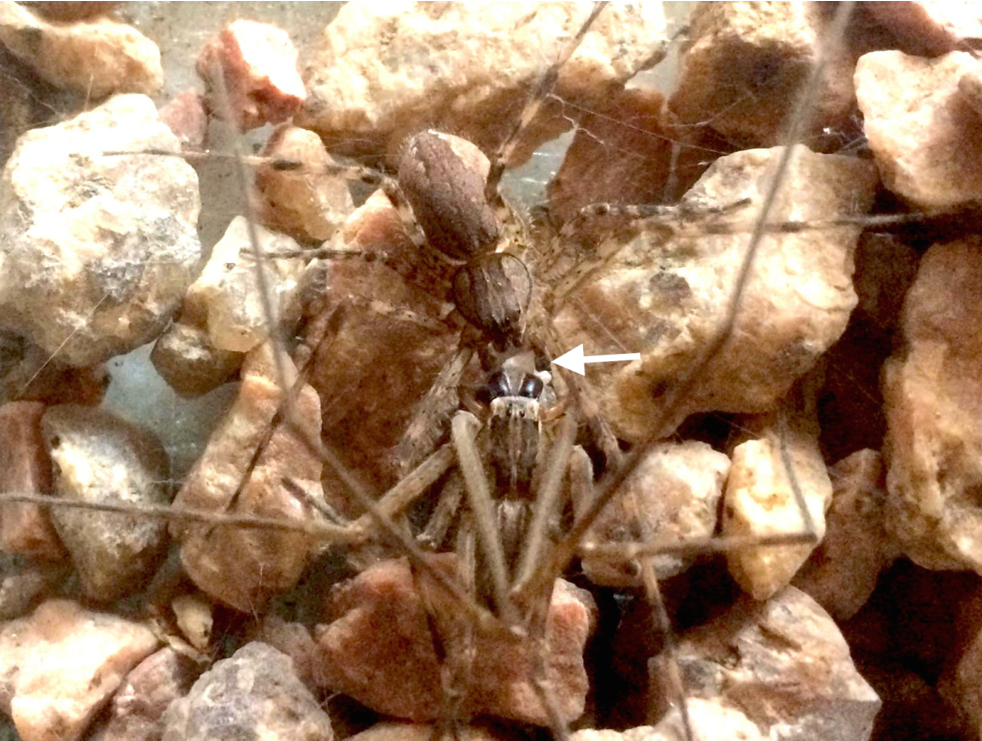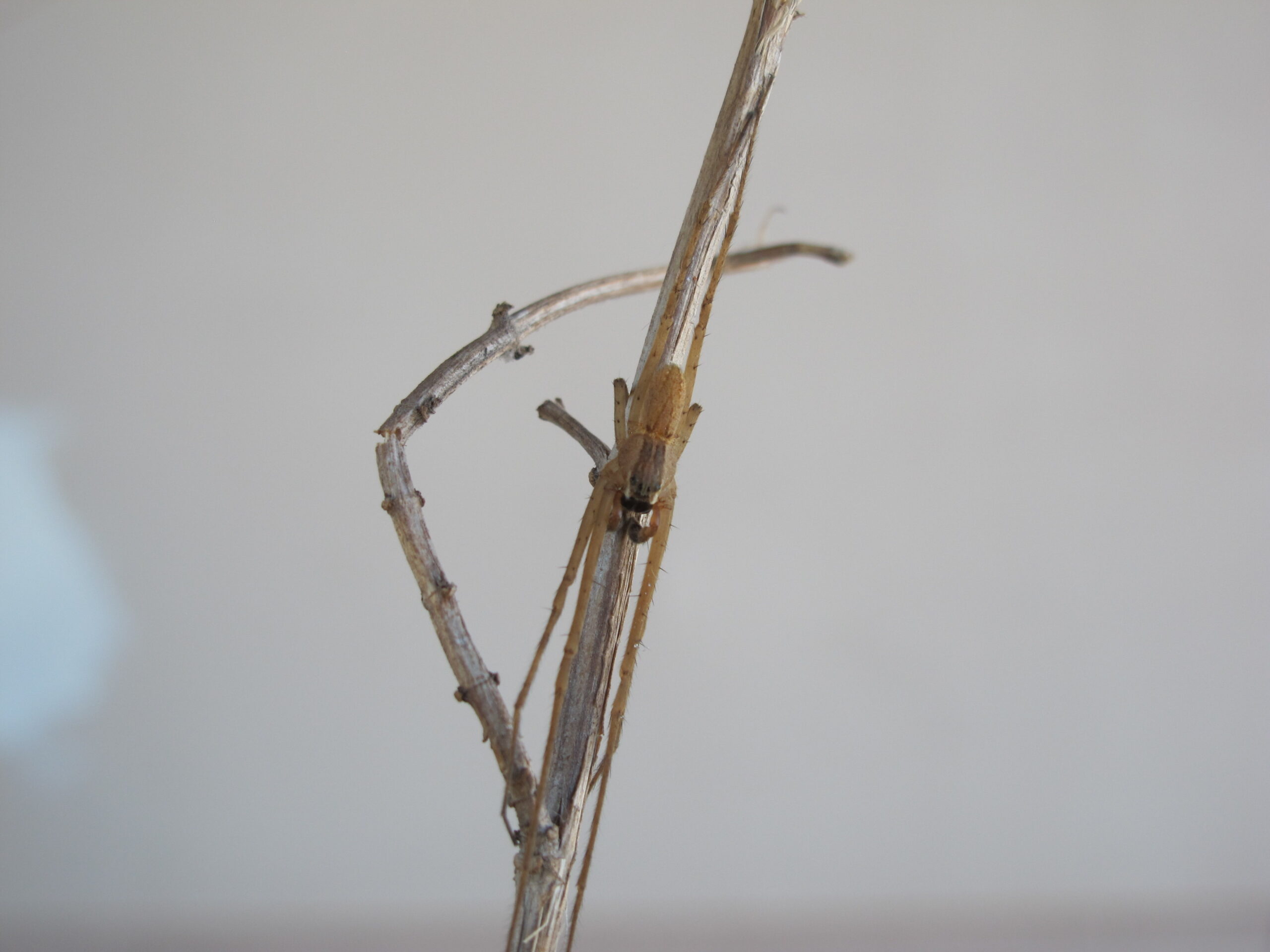- Researchers describe how a South American spider species, Paradossenus longipes, uses silk-wrapped nuptial gifts in its courtship rituals.
- While other gift-wrapping spiders give potential mates edible prey or inedible leftovers, P. longipes surprised scientists by sometimes presenting females with empty gifts.
- The discovery of empty nuptial gifts in spiders raises questions about how the behavior evolved and the role it plays in sexual selection and mating success.
How do you let your crush know you’re interested in taking things to the next level? If you’re a male spider, you may give the female in question a gift as a token of your affection. It may be nutritious food or inedible leftovers — sometimes wrapped in silk, sometimes not. Because of the role these offerings play in mating, scientists have come to call them “nuptial gifts.” Nuptial gift rituals are relatively common among both insects and spiders and can affect a male’s mating success. However, not all gifts are what they appear to be.
A recent study in the Journal of Arachnology is the first to record the spider Paradossenus longipes using silk-wrapped nuptial gifts in its courtship ritual. This discovery not only adds a new genus to the three already known to make silk-wrapped nuptial gifts, but these South American spiders stand for the unique contents of their gifts. Some males presented females with beautifully wrapped balls of … nothing. Empty gifts — a behavior that has never before been described in spiders.

“Empty nuptial gifts are a unique and amazing finding in the animal kingdom,” says Maria Albo, assistant professor at Uruguay’s University of the Republic and the Clemente Estable Biological Research Institute, and a lead researcher on the study. “As far as I know, there is a single example in insects and, in spiders, this is the first.”
The evolution of nuptial gifts and their consequences in sexual selection are the subjects of ongoing research, but scientists believe the behavior evolved independently in many different species. In the case of giving food, the benefit to both individuals seems clear: with more food the female has a higher chance of successfully reproducing, passing on her and the gift-giving male’s genes.
Worthless gifts, however, like the inedible leftovers of a male spider’s last meal, don’t provide the same obvious benefit to females. Is the male being tricky? Or does the simple presence of a gift signal that the male is a good hunter or has good genes?
To study spider mating behaviors, Albo and her team observed P. longipes spiders in both the wild and the lab. For their lab experiments, the team ran mating trials — a sort of spider speed dating — where they could observe the spiders in action. First, researchers gave male spiders the opportunity to make a nutritious or worthless gift by presenting them with a live fly and inedible insect exoskeletons. They then paired male and female spiders and gave them the chance to court and mate.
“The first time [study co-author] Mauro Martinez-Villar told me that a male of Paradossenus longipes had produced an empty gift I was fascinated!” Albo says. “The first thing we did was take the gift from the male, open it under the stereomicroscope, and verify nothing was there except silk.”
P. longipes would be easy for most of us to overlook in the wild. This small, brown South American spider spends most of its life perching or hanging on plants along streams. A closer look, however, reveals some defining features, such as their impressive front legs that earned them the name “longipes” — Latin for “long legs.”
Still, the team decided they wanted more evidence. So they continued to run mating trials until another empty gift was made. Only this time, they caught it on video.
A male Paradossenus longipes making an empty silk wrapping. Video courtesy of M. Martínez-Villar and M. Germil.
There is still a lot to unwrap when it comes to understanding spider nuptial gifts. Why put effort into wrapping a nonexistent gift? And did empty gifts evolve from worthless gifts?
One possibility, according to the researchers, is that empty gifts evolved as a form of deception. Males can attempt to lure females to mate without going to the effort of providing an actual gift, saving them time and energy.
“By providing an empty gift, the male reduces the cost of exploring for a prey or other item,” Albo says. “He can immediately start to produce the gift next to the female and can quickly start courting and mating.”
Or, the silk itself could be valuable to the female, Albo says. Some spiders “recycle” their silk, and its valuable proteins, by eating their webs when they’re done with them.
“We definitely would like to explore whether females can eat the silk,” Albo says. “Such information will be more than relevant to better understand the evolution of nuptial gifts in spiders.”

Citation:
Martínez-Villar, M., Germil, M., Pavón-Peláez, C., Costa-Schmidt, L. E., & Albo, M. J. (2020). Empty nuptial gifts: A further step in the evolution of deception in spiders? The Journal of Arachnology, 48(2), 214-217. doi:10.1636/0161-8202-48.2.214
"here" - Google News
February 22, 2021 at 09:10PM
https://ift.tt/3qMRk12
Here goes nothing: Male spiders found giving females silk-wrapped zilch - Mongabay.com
"here" - Google News
https://ift.tt/2z7PfXP
https://ift.tt/2Yv8ZPx
No comments:
Post a Comment